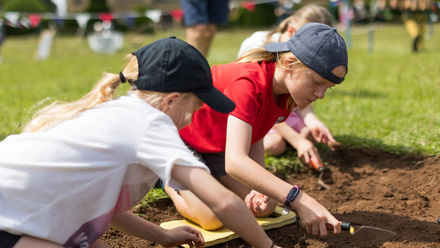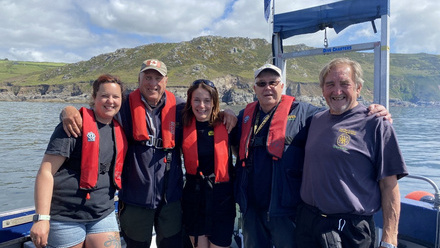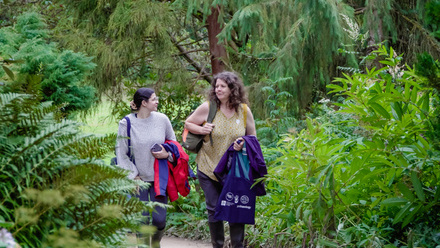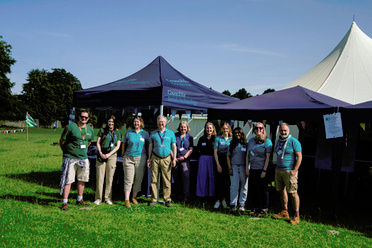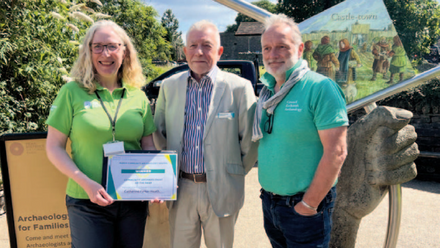Local explorer challege 2021: City and Country
Are you up for a challenge? Explore your local area and see how many of these you can find! Can you get a full row, a column, or even a whole sheet?
For 2021 you can choose a challenge for your local area: the City challenge for urban areas, or Town and Country for rural areas and smaller settlements. Find a downloadable version of the sheets with some extra clues below. We'd love to see how you get on!
Share your progress and photos using the #LocalExplorerChallenge hashtag or by emailing us. And this year, each challenge has a "star item" which is extra hard to spot. If you find one, send us a photo via social media, using the #LocalExplorerChallenge hashtag.
City Challenge list:
1. Building of 4 or more storeys Can include basements and loft conversions
2. Concrete structure Any building or structure which uses concrete as a building material. Look for more modern buildings – although concrete originated in Roman times, it’s mostly seen in 20th century buildings.
3. A structure which has changed use A phone box which houses a defibrillator, a bank which is a pub – what has stayed the same but changed its use near you?
4. Narrow streets, passages, ginnels, alleys Small pedestrian routes through towns and cities – what are they called where you live?
5. Gaslight fittings/old street lights The Georgians first introduced systems for lighting public areas – first using candles, then gas. Old lamp posts are often made of cast iron and have decorative features.
6. A fire hydrant sign Fire hydrants let fire fighters connect to a water supply. Unlike in the USA, UK fire hydrants are usually below ground, with a yellow H nearby to mark the spot. Can you find the company name on the cover?
7. Building with columns / piers / pilasters These are a popular neoclassical feature in architecture, often used on high-status buildings. Columns have a round shaft, piers have a square shaft, both are generally structural (supporting an upper story or roof). When they are attached to a wall, so decorative rather than structural, they are pilasters.
8. Social distancing measures Our local environments have adapted over the last year. What new safety measures can you spot?
9. A place or street name which indicates what activity used to happen there Street names offer lots of clues to the past history of the area. Can you find one which tells you what people did nearby – Butcher's Lane, Baker Street, Candlemaker Alley...?
10. A building which has been extended over time Lots of buildings of all sorts grow over time as more space is needed. You can often spot this by a difference in building materials or style. Can you tell the ages of the different parts? Or perhaps which order different parts were built in?
11. A religious building that’s not the official national church denomination Often the oldest religious buildings in Britain belong to the state denominations – Church of England, Church of Scotland, and Church in Wales. Can you find a building used by a different religion or Christian denomination?
12. Dormer window Dormer windows are roof windows which project out from the main angle of the roof, with small roofs over the extra space created. They’re often used as part of attic conversions to add head height inside the loft.
13. Industrial structure Any building or structure connected with industry – maybe a mill, factory or mine.
14. Public loos Like public fountains, the Victorians provided many of the public loos in the UK, in response to increasingly crowded and filthy urban areas – though originally they were only open to men! Are there any near you, and are they still open?
15. Road works Our environments are constantly being repaired, updated and changed. Find roadworks near you – what's being done?
16. Town hall A town hall, city hall or guildhall was often the centre of administration and local government. These civic buildings were often designed to impress. It still counts if it has been converted to a different use since.
17. Signal box Near current or former railways, signal boxes are raised structures which housed the controls for a section of railway. Some have been converted since the modern centralisation of these controls.
18. Gargoyle Most often seen in gothic architecture, gargoyles are a way to decorate a downspout (where the water runs off a building), usually in the shape of a grotesque animal or face. If it doesn’t have a water spout, it doesn’t count!
19. A street / place name named after an animal Animals and humans historically lived much closer together. Can you find a street or place which is named after the housing or trading of animals?
20. Post box The classic red post-box design is a well known part of the British streetscape. Can you tell the age of one near you?
21. A dragon Dragons live all over our buildings, often perched on the roof or decorating a crest!
22. Railway station In the nineteenth century, railways changed transport forever. How old is your closest railway station?
23. Museum / heritage attraction Find out more about history and archaeology at a museum or historic site.
24. Star item: Public memorial for a woman Women’s contributions to history can be overlooked. Can you find a statue, blue plaque, or other public memorial which commemorates a woman? If so, share your photo with us by email or on social media – we'd love to see!
Town & country challenge list:
1. Signpost A sign or milestone which directs you to a place
2. Dry stone walls Walls built without mortar, just using the shapes of the stones fitted together. It could be at a field boundary or as part of a building.
3. A building which has been extended over time Lots of buildings of all sorts grow over time as more space is needed. You can often spot this by a difference in building materials or style. Can you tell the ages of the different parts? Or perhaps which order different parts were built in?
4. Path of intention Where people aren’t directed to walk a particular route but do so because it’s the easiest way to their destination, a path is eventually created through wear. These are called “paths of intention”, and they are a way to see the impact of human movement on our environment.
5. Bird feeder, bee box or bug hotel Find the ways in which people encourage wildlife near them.
6. Stile A set of steps in a boundary wall, fence or hedge, usually to allow humans to pass but stop animals escaping.
7. Reused bathtub / other domestic item in an agricultural setting Waste not want not – can you find an old bath tub serving as a water trough, or another “indoor” item serving an agricultural use?
8. Stone bridge Hardwearing stone is a good material to use for a bridge, since it copes with both water erosion and wear from traffic.
9. External steps on a building Agricultural buildings are sometimes split into two storeys to allow separate uses – often housing animals below. Can you find a building where a set of steps on the outside of the building leads to the upper storey? Or where there were clearly external steps in the past, which are still discernable from scarring on the building.
10. Milk churn stand These are roadside platform structures beside dairy farms, where milk churns were placed to be collected and transported by car or lorry - until milk began to be transported in tankers in the later twentieth century.
11. Local pub A traditional social hub, where is your nearest pub – and can you figure out where its name comes from?
12. Post box The classic red post-box design is a well known part of the British streetscape. Can you tell the age of one near you?
13. Ridge and furrows In the medieval period, ploughs were not reversible (as they are now), so instead of creating a flat surface repeated ploughing created a regular pattern of ridges and troughs in fields. If they have not been ploughed out since, this pattern is still visible, called “ridge (or “rig”) and furrow”.
14. Market cross Market crosses were used to mark the sites of the market or fair in a town, which would have contributed to its economic success. They can range from the simple to the very elaborate.
15. Industrial structure Any building or structure connected with industry – maybe a mill, factory or mine.
16. A castle or defensive building It can be standing, ruined or the site where one used to stand. Can you find a castle, tower, or defensive wall intended to protect people in case of conflict?
17. A barn (or agricultural building) that has been converted into a house As farming practices have changed and the population has grown, some buildings which used to have agricultural uses have been turned into houses. Look for large houses with wide barn doors.
18. A village green A common open area in settlements historically allowed residents of the town to graze and water small numbers of animals. Now it’s mostly valued aesthetically and as a recreational open space.
19. Derelict farm buildings Unlike in towns where there is pressure for space, farms buildings are often allowed to decay naturally rather than being converted or demolished. Can you tell what it used to be used for?
20. Well / water pump Before the mechanisation of water provision, it had to be drawn up from underground reservoirs using a manual pump, or a different kind of power like a wind-powered pump.
21. Millstone These great round stones with a hole in the centre were used to grind down grain into flour, often turned by water or wind power. Many are now stood on their side and used decoratively.
22. Stables A building originally built to house horses, often with a hay loft above so food or bedding could be pitched directly down. While modern stables are often largely recreational, horses used to be a key source of power for farming, and a main method of transport.
23. A place named after a person Saints, local celebrities, ancient kings – can you find a town, street or building near you which is named after a person?
24. Star: Dovecote Dovecotes (or doocots in Scotland) are structures intended to house pigeons or doves, and can be found free-standing or attached to a barn or house. Until the seventeenth century, keeping doves was an elite privilege, so look near old high-status houses or castles.
Contact details
Festival
Council for British Archaeology


